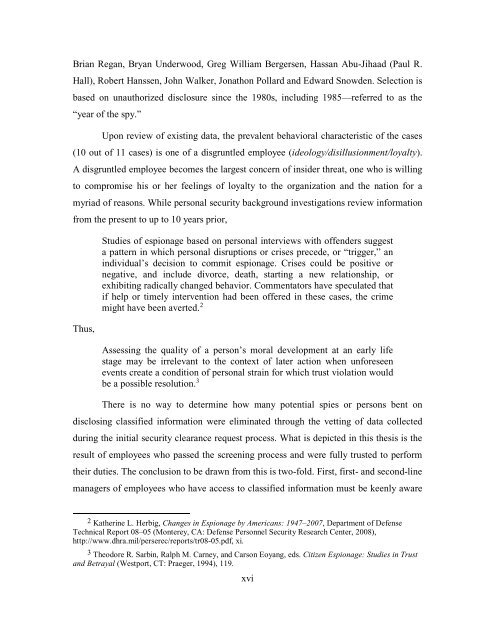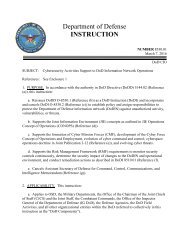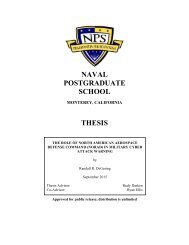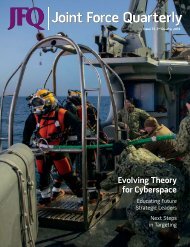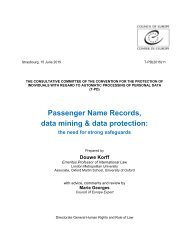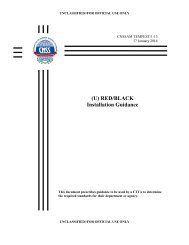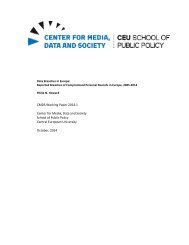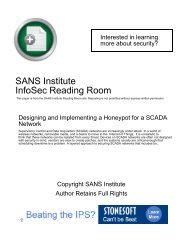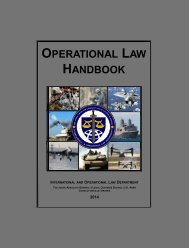SCHOOL THESIS
?view&did=768625
?view&did=768625
You also want an ePaper? Increase the reach of your titles
YUMPU automatically turns print PDFs into web optimized ePapers that Google loves.
Brian Regan, Bryan Underwood, Greg William Bergersen, Hassan Abu-Jihaad (Paul R.<br />
Hall), Robert Hanssen, John Walker, Jonathon Pollard and Edward Snowden. Selection is<br />
based on unauthorized disclosure since the 1980s, including 1985—referred to as the<br />
“year of the spy.”<br />
Upon review of existing data, the prevalent behavioral characteristic of the cases<br />
(10 out of 11 cases) is one of a disgruntled employee (ideology/disillusionment/loyalty).<br />
A disgruntled employee becomes the largest concern of insider threat, one who is willing<br />
to compromise his or her feelings of loyalty to the organization and the nation for a<br />
myriad of reasons. While personal security background investigations review information<br />
from the present to up to 10 years prior,<br />
Thus,<br />
Studies of espionage based on personal interviews with offenders suggest<br />
a pattern in which personal disruptions or crises precede, or “trigger,” an<br />
individual’s decision to commit espionage. Crises could be positive or<br />
negative, and include divorce, death, starting a new relationship, or<br />
exhibiting radically changed behavior. Commentators have speculated that<br />
if help or timely intervention had been offered in these cases, the crime<br />
might have been averted. 2<br />
Assessing the quality of a person’s moral development at an early life<br />
stage may be irrelevant to the context of later action when unforeseen<br />
events create a condition of personal strain for which trust violation would<br />
be a possible resolution. 3<br />
There is no way to determine how many potential spies or persons bent on<br />
disclosing classified information were eliminated through the vetting of data collected<br />
during the initial security clearance request process. What is depicted in this thesis is the<br />
result of employees who passed the screening process and were fully trusted to perform<br />
their duties. The conclusion to be drawn from this is two-fold. First, first- and second-line<br />
managers of employees who have access to classified information must be keenly aware<br />
2 Katherine L. Herbig, Changes in Espionage by Americans: 1947–2007, Department of Defense<br />
Technical Report 08–05 (Monterey, CA: Defense Personnel Security Research Center, 2008),<br />
http://www.dhra.mil/perserec/reports/tr08-05.pdf, xi.<br />
3 Theodore R. Sarbin, Ralph M. Carney, and Carson Eoyang, eds. Citizen Espionage: Studies in Trust<br />
and Betrayal (Westport, CT: Praeger, 1994), 119.<br />
xvi


